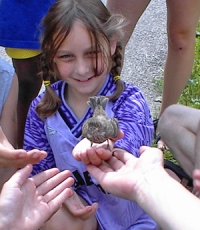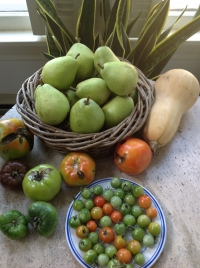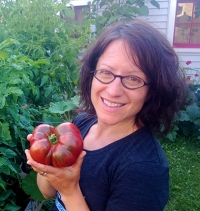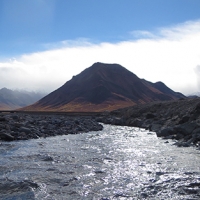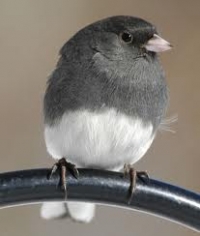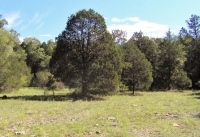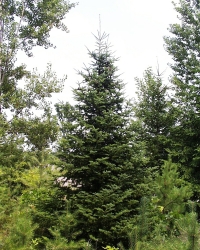
Milwaukee Urban Ecology Blog
Fifteen years ago a movie cost you on average $4.50 (now $8.20), a gallon of gas cost $1.06 (now $3.75), a dozen eggs went for $1.09 (now $2.50) and an Urban Ecology Center membership cost $25 (still $25). What? The crazy thing is that while our membership rates remained the same for 15 years, our offerings increased by at least a factor of ten if not a hundred! 15 years ago we had only one center — a single, double-wide trailer in the then run-down Riverside Park. Our lending program consisted of just a few canoes and our program offerings, while always of the highest quality, represented just a fraction of the number of what we can offer now.
“Who knew potatoes could be so thrilling,” says Barb Finch, a member of a Community Supported Agriculture (CSA) farm from Milwaukee. “I grew up eating mashed or boiled potatoes every day, they weren’t that interesting. The potatoes I get in my CSA box are so full of flavor. The Yukon Golds and Reds are incredible. I could never go back to buying a potato from a grocery store again.”
Even poor college students can afford to eat well. Jamie Ferschinger belonged to a Community Supported Agriculture (CSA) farm through most of her college career and doesn’t ever “remember it being a hardship.” “I love to cook and I always had friends around to eat what I cooked. I got a smaller share so it wasn’t an overwhelming amount of food,” says Ferschinger. She eventually became a drop site for her CSA and it opened up a whole new demographic for the farmer – college kids.
It was the kind of adventure that inspired unbridled cheers as well as quite moments of awestruck reflection. A week-long trip in Alaska has that effect on people. The Urban Ecology Center led its second Great Alaska Adventure this past September and this year we’re doing it again. The camaraderie displayed by our participants was truly inspiring and we looked forward to each day and savored moments wishing they would never end.
I thought the day would never come. Two years ago I probably couldn't tell you when my internship would end, and now I'm attempting to refute the inevitable conclusion. That's why I'm telling my story, because I want others, just like me, to share the experiences and incredible acquaintances that I've had the pleasure of having.
I recently pre-screened a copy of the Ordinary Extraordinary Junco in preparation for an April family program*. The film truly was fascinating and while I have always liked the little junco (especially when it is one of the only birds around on winter bird walks), my appreciation for them grew even more after having watched the film. The rapid adaptation that juncos are undergoing as a species and their unbridled tenacity make them a really neat bird.
A cedar glade is a type of savanna found on sites that are naturally protected from fire and where the bedrock is exposed or comes very close to the soil surface. The cedar, after which this natural community is named, is eastern red cedar - also known as Virginia juniper (Juniperus virginiana). Red cedar is not a true cedar (genus Cedrus) although it is a member of the cedar family (Cupressaceae). The rocky, thin soiled environment of the cedar glade is too harsh for most trees to become established, but red cedar is able to grow in cracks in the bedrock or in random pockets of deeper soil. Consequently, trees in the glade grow widely spaced, in clumps, or in…
Why would I recommend the Urban Ecology Center's Outdoor Leadership program? Honestly, I don't even know where to begin! It's not only the new experiences in both the working and the natural world that made this experience so incredible for me, it was also the new mindset I now have. If you are looking for a great way to get outside and learn about the world around you, but also get paid for the employment experience you gain, this is exactly the program for you. But it's not just that- if you want to meet new people and find friendships that will last a lifetime, this is just what you are looking for. And hey, who knows, it might completely…
During our recent bout of sub-zero weather, I noted the shortage of wildlife in my backyard. I knew that woodchucks were hibernating in cozy burrows, birds had insulating feathers, and turtles used anti-freeze in their blood to get through the winter, but then I considered our spineless friends. Surely all of Earth's 1.3 million invertebrate species couldn't move inside for the winter. But, where did they go? This question made me think about one bug in particular; one that I commonly associate with the warm weather. The antlion. What was my old buddy Mr. Ant Lion up to this time of year?
Living in Wisconsin, one can expect winters to be cold. Well, these last few days of frigid temperatures have tested even the hardiest Wisconsinites. I for one have been thanking my lucky stars for my fleece long johns and my wool sweaters, and I’ve been drinking more than my fair share of hot tea and coffee. Looking out of my window at our winter wonderland, I can’t help but wonder how our animal friends manage to keep themselves warm through the cold winter months. As we know, some hibernate, some migrate, and some don’t make it through the winter. Those that do stick around and survive make use of our coniferous trees for thermal cover and food. This month’s Native…
Copyright © 2023 The Urban Ecology Center

